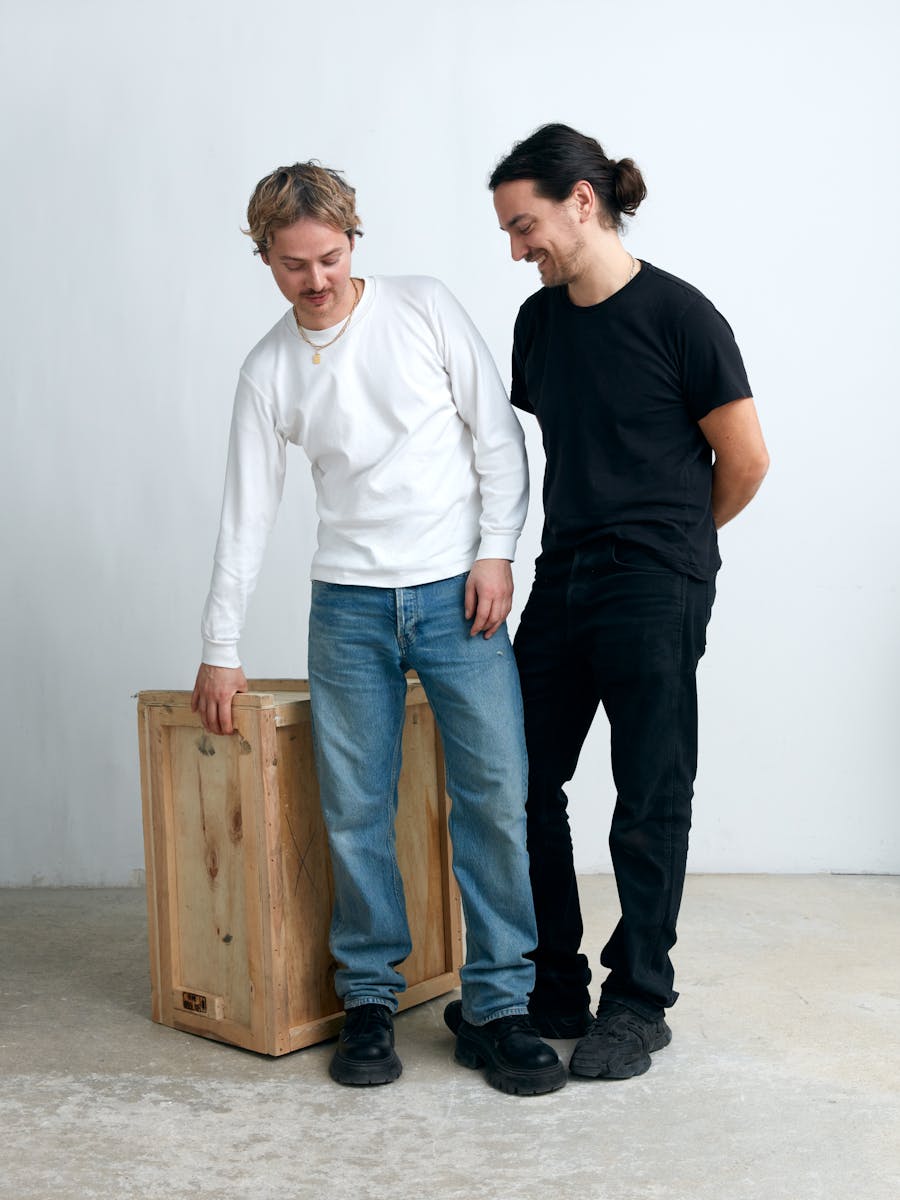From the Emphasis Issue
Just as we curate our wardrobes, collections of our favourite clothes, let’s do the same with our favourite buildings. For a long time Nicolas Ghesquière has been creating his wardrobe of concrete and light, where couture and architecture come together.
Let’s imagine that one fine day, gifted with strange powers, you are suddenly able to change your house as easily as you can change your top or trousers. You would swap one dwelling for another, much as you take off a dress to put on a suit, or as easily as you kick off a pair of heels to slip your feet into a pair of mules. You’d revel in gathering together apartments, penthouses, manors, and villas. One season you’d be into brutalism, the next neo-baroque; from Haussmanism, you’d move onto post-modernity. You’d be in style in spaces designed for you that you could switch up according to your mood. In other words, you’d build a collection of houses.
I’d like to think that Nicolas Ghesquière, Artistic Director of Women’s Collections at Louis Vuitton, would share this dream - he for whom construction is a real passion. Would he not love to see some of his favourite architecture dangling from hangers, presented as exceptional pieces? Indeed the word ‘piece’ itself highlights the proximity of the two disciplines of architecture and couture.
Doubtless he’d start by hanging in his wardrobe the 1700m2 home of Bob and Dolores Hope, which was the setting for a Vuitton show in 2015, the iconic building located in Palm Springs and designed by the celebrated John Lautner. He could partner it with the TWA flight centre at JFK airport in New York City, a futurist work designed by Eero Saarinen in 1961. It was in this cathedral, reminiscent of a bird or an insect, subsequently transformed into a hotel, that he put on a show in 2020. To celebrate the Cruise Collection, in this vast space, he launched jets of fabric, the outfits gliding past in flight formation. Still fascinated by the ‘starchitects’ of the US, he chose the Salk Institute for Biological Studies in San Diego which Louis Kahn built in 1965 for last year’s Cruise Collection, majestically showcased, projecting rainbows of sand and light onto a brutalist backdrop.
To these iconic pieces, he would add all of those to which he one day dreamed of bringing his talent, starting with the museum designed by Oscar Niemeyer at Niteroi in the harbour of Rio de Janeiro, a daring and dizzying flying saucer attached to the cliff. Back in France, he would add some of the major sites where he has erected his catwalks. The Fondation Maeght de Saint-Paul de Vence where the architect José Luis Sert created a little gem glorifying the Catalan vault, the flexible arrangement of levels, a desire for nature in a modernist shell. All of the great artists represented within these walls would then accompany him, projecting into his fairy-like textiles embers of pigments, shards of fusain, sunlit frames. Then would come the rigid majesty of the Monégasque fortress imposing itself amid the penumbra and the soft clinking of hangers. Memories of royalty would suddenly bedeck his creations. A relaxed Grace Kelly, her shoulders resting against an old stone wall, would take away the breath of anyone who caught a glimpse of her, because beautiful architecture is never more so than when illuminated by an insolent smile.
One never tires of observing the complicity between the hard and the yielding, the rigid and the flowing, the static and the fluttering, between a veil of cotton and a veil of concrete. The magic of oppositions, this frisson turns the needle into an extension of the spade, makes the studio pattern the equivalent of the blueprint. It’s the heady mix of the last minute frenzy of the construction process and of the countdown to the show, when final adjustments have to be made on a sylph-like model alongside hair and make-up; a febrile moment where every detail counts, for the designer and the architect alike. Because the latter is also accountable for every square inch of their building and in the hours that precede its opening, they have to fuss around it, put the finishing touches to an entrance hall, polish a glass facade, roll out a carpet on a floor that’s still gritty.
Hearts race, tension builds, and what is true for the collection is also true for the building: it has to hold up. The prototype has to have enough guts to swallow all of the criticism. And the collection is shown and every piece is a storey, and every storey is an outfit, and the fabric is the material and the models the columns and the couturier, a demiurge.
On the 18th of January, the architect Anne Démians was inducted into the Académie des Beaux-Arts by photographer Sebastião Salgado. She wore the costume of the elected members of the institute, the customary green jacket. Green? From her meeting with Nicolas Ghesquière, for whom she had such high hopes, she had obtained that marvellous, almost midnight blue frock coat, spangled with silver embroidery, asymmetrical as innovation demands, sublimely elegant, showcasing the sword that as an Academician she wears attached to her belt. It was completely couture and completely architectural. Dare we suggest that more than a few of her fellow Academicians must have been jealous on seeing the quiet flamboyance of this woven edifice, worn with such grace that its perfection made it an oriflamme as well as a home, a skin, in short, to wear to any ceremony. Fashion and architecture are sisters and Nicolas Ghesquière knows it, and through the magic of his art he links those two registers to that of choreography, as his collections dance and the walls tremble with it, and emotion takes hold of us.







